Bearing Witness in Brookhaven, NY: A Visit with Monique Fitzgerald of BLARG (Brookhaven Landfill Action and Remediation Group)
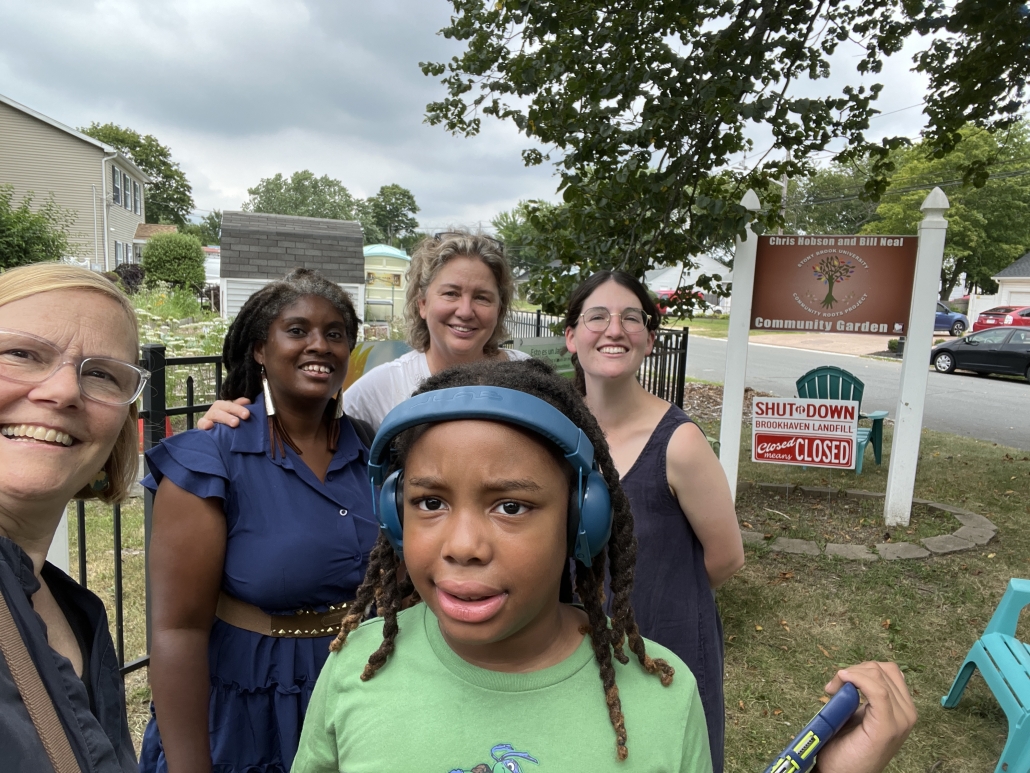
By Rebecca Martin
This summer, a small group of advocates—including Rhonda Keyser, a talented artist, Program and Policy Director at Cafeteria Culture and member of the Brooklyn Solid Waste Advisory Board, Natalie Russianoff, Program Assistant at Beyond Plastics; and myself—traveled to Brookhaven, NY (North Bellport) to visit Monique Fitzgerald, co-founder of BLARG (Brookhaven Landfill Action and Remediation Group). Visiting coalition partners in person to see the work they are doing and the harms they face is a crucial part of advocacy—what many call “ground truthing”—to truly understand the lived realities behind environmental justice struggles.
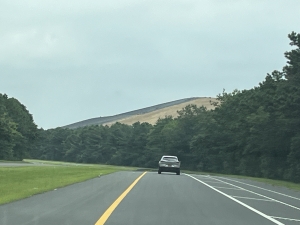
Monique and her nephew welcomed us with incredible warmth and generosity at their community garden, then walked us through the neighborhoods that lie in the shadow of the Brookhaven Landfill. What we witnessed was deeply sobering. From towering mounds of incinerator ash and construction debris to the constant drone of truck traffic, it was impossible to ignore the scale of harm being done here. This landfill is not just a source of pollution—it is a symbol of systemic neglect.
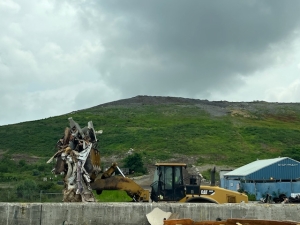
BLARG is a resident-led direct action group rooted in Brookhaven/North Bellport, a predominantly Black and Latino neighborhood adjacent to the landfill. The organization is focused on protecting residents’ health, demanding accountability from local and state governments, and ultimately shutting down the landfill. Monique Fitzgerald herself is a tireless advocate who never shies away from a fight or from helping others. She frequently travels to Albany to speak about the harms facing her community and ensure their voices are heard.
The Brookhaven Landfill has a notorious history of environmental violations. It receives waste from all across Long Island, including highly toxic incinerator ash. This site has been linked to toxic groundwater contamination, including PFAS chemicals, persistent air pollution, and noxious odors that make daily life difficult for nearby residents. The largest source of incinerator ash deposited at the landfill comes from the Reworld Hempstead facility (formerly Covanta Hempstead) in Uniondale, NY. This so called “waste-to-energy” incinerator burns municipal garbage and produces between 500 and 750 tons of ash each day, including fly ash and bottom ash that contain heavy metals and other hazardous pollutants. A 2024 state review found violations in how this ash is handled and tested, yet trucks continue to haul tons of this toxic byproduct into a landfill surrounded by homes, schools, and playgrounds.
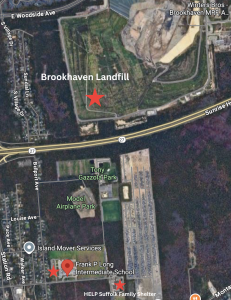
Just about 2 miles from the landfill sits Frank P. Long Intermediate School, widely known in the community as the “Sick School”. As of 2019, out of 105 staff members, about one-third have been diagnosed with cancer, and 18 have died. Meanwhile, HELP Suffolk, a family shelter operated by Help USA, provides temporary housing for roughly 76 families experiencing homelessness just next door of the school. The co-location of a shelter, a contaminated landfill, and a school paints a stark picture of systemic neglect and environmental injustice in the area.
The broader landscape surrounding the Brookhaven Landfill reveals the cumulative impact of decades of harmful land use decisions. In addition to the landfill itself, the area is marked by widespread clear-cutting for industrial warehouse development, a power plant, a county jail, and major truck corridors. These patterns did not arise by chance; they likely reflect long-standing discriminatory planning practices that prioritize industrial infrastructure over the health and wellbeing of low-income communities.
This failure of good planning is reinforced by the fact that the Town of Brookhaven’s last Comprehensive Land Use Plan was adopted in 1996—almost 30 years ago. However, in May 2025, the town issued a Request for Proposals to develop a new town-wide Comprehensive Land Use Plan. This upcoming planning process presents a critical opportunity for residents to shape the future of their community. If done well, a Comprehensive Land Use Plan should reflect the values, needs, and vision of the people it serves. For North Bellport and other frontline communities, it could become a powerful tool in the broader fight for environmental justice, ensuring that future land use decisions protect rather than harm their neighborhoods.
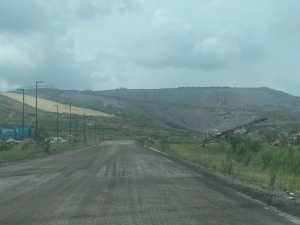
The strength, resilience, and determination of Monique, her family, and the North Bellport community is inspiring. Their fight is far from over, but with continued support, advocacy, and awareness, change is possible.
How to Provide Support
- Donate to BLARG: Contributions—whether one-time or recurring—help sustain this grassroots movement and support the frontline work being led by residents of North Bellport.
- Stay Informed: Follow BLARG to stay updated on developments in the fight against the Brookhaven Landfill.
- Advocate for Planning Justice: Residents of Brookhaven and the surrounding region are encouraged to engage with the upcoming Comprehensive Land Use Plan process. Ask local officials how the public will be included and demand meaningful, inclusive community participation.
- Share the Story: Help lift up this fight. Talk to your friends. Share this blog. Invite others to learn more.
###
Rebecca Martin is an advocacy consultant who serves as Project Manager of the Leachate Loophole, Director of Community Partnerships and Training at Beyond Plastics, and Source Water Protection Coordinator for the Hudson River Drinking Water Intermunicipal Council (Hudson 7). She is also lead strategic advocate and writer for KingstonCitizens.org.
